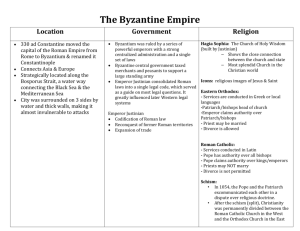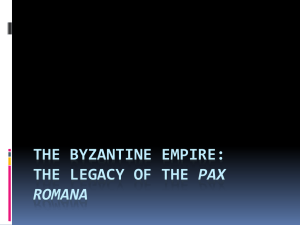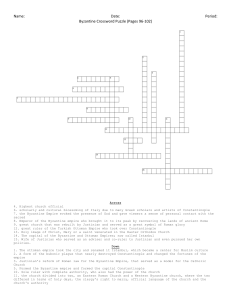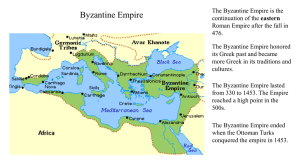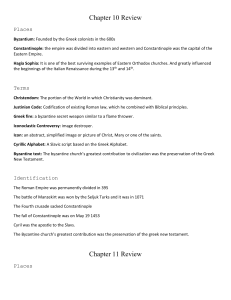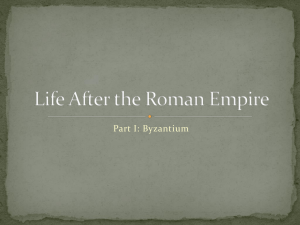The Byzantine Empire
advertisement
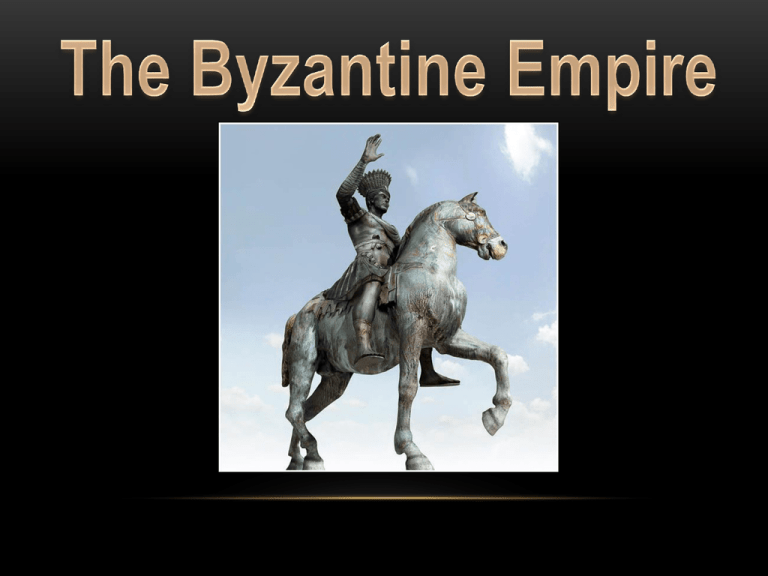
Byzantine Empire under Justinian (at its peak) Constantinople Black Sea Asia Minor/Anatolia Mediterranean Sea • The Byzantine Empire (340-1453) • The eastern half of the Roman Empire • Consisted of southern Europe, Anatolia, Palestine, and Egypt • Capital at Constantinople since 340 CE • Emperor that divided the Roman Empire into two: •Constantine • Central Authority collapsed in Western Roman Empire in 476 CE • Invasions, Weakened Government and Economy, Plagues • Eastern Roman Empire (Byzantine Empire) survived • Lasted for another thousand years • Infrastructure and central authority remained strong • Legacy of the Roman Empire continued • The emperor simplified complex Roman laws. • Employed a committee to edit Roman laws and use them as a foundation for Justinian’s Code. • The code consists of twelve books with over 4,000 laws. • Political impact: influenced European laws • Legal impact: the code differentiates between civil and criminal law • Political structure • Centered around the Emperor • Capital: Constantinople • Empire organized through a bureaucracy • Regulated trade, taxes, and prices • Social and Cultural Differences with West • Different languages • Western Roman Empire = Latin • Byzantine = Greek • Cultural Perceptions • Byzantines thought: Western Europeans = “barbarians” • Westerners thought Byzantines = “sneaky” and “liars” • Different forms of Christianity emerged • THE GREAT SCHISM (East v. West) • Pope and the Patriarch of Constantinople excommunicated each other in 1054 • First split in Christianity - The Eastern Orthodox Christian Church • Closely tied to the imperial government • Patriarch of Constantinople • Disagreements continue for over 200 years • • • Churches divided over icon use Disagreements over whether to use local languages at church services • East: wanted to • West: didn’t Disagreements over celibacy, should priests marry? • East: wanted to • West: didn’t

